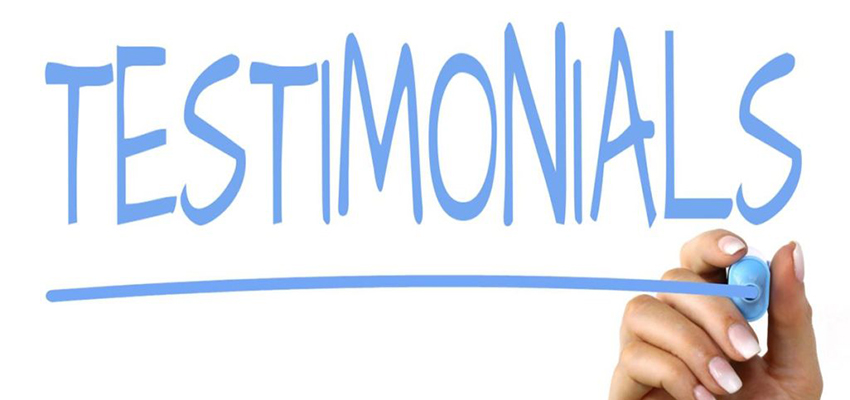Show:
6 Handy Steps You Can Use To Improve How Your Website Looks and Works
Every website has a home page.
A home page is that spot in the website that is usually given the most attention and creativity because that is where your guests would first visit when they’re on your website. You have a duty to make a good first impression.
What if after all you have done to excite and impress your visitors with your home page and other pages, they still leave your site dissatisfied due to one or more issues you overlooked, how would you feel?

When a visitor comes to your site, you have a very short amount of time to attract his attention. According to Nielsen Norman Group, visitors will most likely only read 20% of the words on a page before they decide to leave or stay.
A cluttered website and one that doesn’t give a concise message or call to action won’t keep your visitors any longer.
Below are 6 things to do to improve your website’s look and feel, increase conversions, and bring guests to visit over and again:
1. Website Navigation
Your website navigation system is supposed to enable users to quickly reach their product or service needs. It is also a great way to boost your search engine rankings for faster reach. When visitors click on this link, it should take them right to the page advertised. You need to devote time and expertise to building a robust navigational route.
It is essential to use more down-to-earth communication languages on your website either in the headings or in the body. Use words you know visitors would commonly use when making their searches. Avoid very formal expressions. You’re definitely not a governmental portal. Stay clear of those “What We Do”, “Our Products” expressions.
Help your visitors reach you with fewer clicks and help search engines consider your relevance. Also, it is unhealthy when your visitors hit a dead end while on your site. That is a No-No.
You have to keep them moving. When users reach your service pages, for instance, add a call to action link straight to your contact form.
If they’re on your homepage, make it easy for them to transit to the service pages without going up to the Service Page button. Be sure to name the service page in the link so your visitor knows exactly where the link is leading.
Your email sign-up forms should also be given good attention too. They should be visually prominent, offer proof, and give a promise. Try to make it obvious what you are asking your visitors to sign up for.
Having fewer but interested engaged users who are there because they want to be is better than having countless users who can’t really figure out what they’re doing with you or how they got there in the first place. Avoid baiting users to keep to your site.
Keeping to all these details is essential to having a prosperous web office.
2. Add a Value Proposition
The value proposition on your site or the mission statement tells visitors in a nutshell what you do, how you do it, and why you do it.
Spread your value proposition across your website. Place it on your home page; probably somewhere in your headline. Put it in your blog and in your about page.
You need to keep your visitors aware of what exactly they will be getting if they were to use your services or get your products or subscribe to your newsletter or read your blog.

Your mission statement should contain these vital points:
- Where the company is
- What their customers get
- What information they give or provide
- What benefits visitors can gain
A sample mission statement should go something like this:
[Our Company] is where [such audience] can find [such information]. Our goal is to help you get [such benefit].
3. Call to Action Text
Now that you’ve got your desired audience who are willing to use your services or get your products and who are no longer in a hurry to leave, what will you have them do?
This is where the call to action or CTA comes to play, and it’s quite a huge area.
First, you must use buttons.
Buttons should solely be used for actions. Actions are like “Place An Order,” “Go To Cart” “Subscribe For Newsletters” “Go To checkout.”
If you have noticed, the text on the buttons all began with a verb. That is the tradition. Otherwise, it would no longer be a call to action.
Always use the 1st person pronoun (I, me, my) to give your users a hint of what the CTA will do. For instance, use Download My Ebook.
Another effective method to call to action is to use the WYLT IWLT test. This is short for would you like to …I would like to.
You should be able to score every button you create either high or low using this test.
4. Mobile-friendliness
Your site must be able to operate on the two most popular devices (phone and laptops) conveniently to the user. When users begin to have a hard time viewing your page through their mobile devices — zooming in and out every now and then–, you will most likely lose them.
You should also remember that only recently, Google updated their mobile search rankings algorithm to give mobile-friendly web pages a higher rank score in mobile search results against non-mobile-friendly pages.
There’s a reason Google did this: make users have a good experience when they come visiting your website. Of course, sites with tiny links and which are hard to navigate, won’t keep their visitors hanging around for long.
To be honest with yourself, which site are you likely to have a better experience on?
5. Testimonial Pages
The age of the Testimonials Page is out. Take it or leave it. Only one in a thousand persons would want to go around checking through testimonies on a Testimonial Page. You yourself wouldn’t want to spend time doing such on another site.

That doesn’t mean you shouldn’t present testimonies. No, don’t get me wrong.
Simply take the good things your favorite clients have to say about you and spread them throughout the other web pages on your site.
6. Team Pages
In order to build better confidence and trust in your customers as regarding your company and its offers, give them your staff.
Yes, let them know who are those behind the scenes in your company. This creates a sense of assurance and confidence in them; helping them to ascertain that you’re not running a one-man show.
You should also consider using individual team pages in order to give search engines like Google a chance to rank you when people search for your name specifically.

 Return to Previous Page
Return to Previous Page








